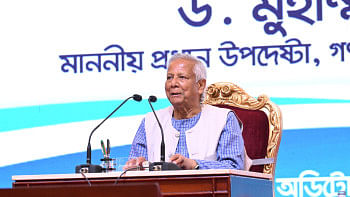Bangladesh a bright example of women's employment: study
Bangladesh has made significant progress in women's employment thanks to better education and wider opportunities, according to a study by MasterCard.
Since 2009, the country has gained more than 80 points in overall employment, which is part of an index that consists of 16 countries from the Asia Pacific region, indicating that women are more or less as economically active as their male counterparts.
A score under 100 indicates gender inequality in favour of males, while a score above 100 indicates inequality in favour of females. A score of 100 indicates equality between the sexes.
Of note is the stride made by the country between 2007 and 2015 in 'regular employment', a sub-category of the MasterCard Index of Women's Advancement.
During the period, Bangladesh soared 21.1 index points to 102.4 in regular employment opportunities, which is the second highest rise after India (39.6).
In terms of female participation in the workforce, the country surpassed India and Sri Lanka by a wide margin, scoring 69.3 against 35.8 and 46.5 respectively. In fact, Bangladesh did better than the Philippines, Indonesia, Malaysia and South Korea in this respect.
Yet, in the overall index for women's advancement, Bangladesh managed the second lowest overall score, of 44.6, this year.
Scores are indexed to 100 males to indicate how close or how far women are to achieving socio-economic parity with men.
In the overall index, Bangladesh was slightly ahead of India (44.2) but behind Sri Lanka (46.2). The fact that all three countries scored less than 50 means much more needs to be done to achieve gender parity.
The index consists of three main indicators that were derived from additional sub-indicators: employment (workforce participation, regular employment), capability (secondary education, tertiary education) and leadership (business owners, business leaders, political leaders).
Of the three components, 'capability' remains the strongest indicator of Asia Pacific women's progress towards gender parity for the ninth consecutive year, the survey found.
Five markets, namely New Zealand, the Philippines, Vietnam, Sri Lanka and Thailand had a score of 100, indicating that women are on par or better represented in secondary and tertiary institutions than their male counterparts.
Comparatively, women in India (85.7), South Korea (85.9) and Bangladesh (87.6) have fewer opportunities than men when it comes to secondary and tertiary education.
However, women in Bangladesh have made the biggest strides in tertiary education enrolment over the past nine years (2007 to 2015), rising 31.7 index points to 76.8.
When it comes to women breaking the glass ceiling and hitting the top rungs of corporate ladder, Bangladesh scored the lowest among the 16 Asia Pacific countries surveyed.
It scored a paltry 6.2, meaning for every 100 male business leaders, the country has around 6 females in top positions.
The study also revealed that business ownership among Bangladeshi women is the lowest (11.7 points) in the Asia-Pacific region. But, the country came in the eight position when it comes to political leadership with its score of 24.7, which is more than Thailand, Indonesia, Malaysia, Japan, South Korea, India and Sri Lanka.

 For all latest news, follow The Daily Star's Google News channel.
For all latest news, follow The Daily Star's Google News channel. 



Comments